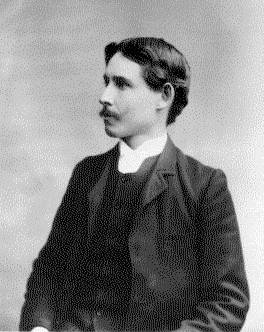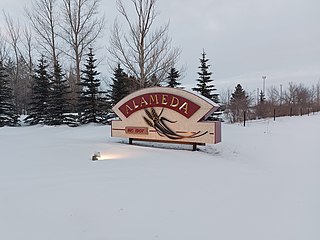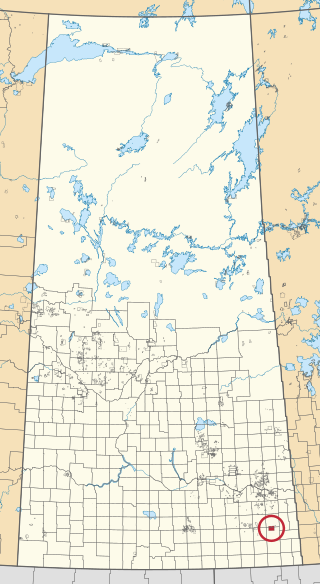
Blank verse is poetry written with regular metrical but unrhymed lines, almost always in iambic pentameter. It has been described as "probably the most common and influential form that English poetry has taken since the 16th century", and Paul Fussell has estimated that "about three quarters of all English poetry is in blank verse".

Archibald Lampman was a Canadian poet. "He has been described as 'the Canadian Keats;' and he is perhaps the most outstanding exponent of the Canadian school of nature poets." The Canadian Encyclopedia says that he is "generally considered the finest of Canada's late 19th-century poets in English."
Sturgis is a town of 620 people in east central Saskatchewan, Canada. The Town of Sturgis is 95 km north of Yorkton on Highway 9. It is located in the Assiniboine river valley near the lakes and woods region of the province.

Cannington is a provincial electoral district for the Legislative Assembly of Saskatchewan, Canada. Located in the extreme southeast corner of the province, this constituency was redrawn to include the former district of Souris for the 18th Saskatchewan general election in 1975.

Alameda is a town in south-eastern Saskatchewan, Canada, approximately 50 km east of Estevan. A translation of Alameda from Spanish is "Poplar Grove" or "Tree Lined Avenue". One popular story is that the town was named for Alameda, California although there is no written documentation to support this. Alameda had a population of 369 in the Canada Census of 2016.
Oakshela is a hamlet in Saskatchewan, Canada. It was founded in the late 19th century by farmers and quickly became a flourishing small town. It once housed a post office, three stores, a school, a church and several families both within town and just outside town.

Division No. 1 is one of eighteen census divisions in the province of Saskatchewan, Canada, as defined by Statistics Canada. It is located in the southeast corner of the province, bordering Manitoba and North Dakota. The most populous community in this division is Estevan.

Carlyle is a town in the province of Saskatchewan, Canada. Carlyle is the largest town servicing the far south-eastern corner of Saskatchewan and as a result, has become the economic and services centre of the region. Estevan and Weyburn are the closest cities and both are a little over 100 kilometres away. Regina, the provincial capital, lies 200 km to the north-west.
Lampman is a small town of around 735 people located in the south-east part of the province of Saskatchewan, Canada, roughly 30 miles north-east of Estevan.

Frobisher is a village in the Canadian province of Saskatchewan within the Rural Municipality of Coalfields No. 4 and Census Division No. 1. It has an elevation of 576 metres above sea level.

Kenosee Lake is a village in the Canadian province of Saskatchewan within the Rural Municipality of Wawken No. 93 and Census Division No. 1.
Bryant is an unincorporated community in Benson Rural Municipality No. 35, Saskatchewan, Canada. The community is located on Highway 702, approximately 20 km (12 mi) west of Lampman and 20 km (12 mi) north of Estevan. Bryant gets its name from Quaker poet, journalist, and editor William Cullen Bryant.

Cannington Lake, also known as Cannington Lake Resort, is a hamlet within the Rural Municipality of Wawken No. 93, Saskatchewan, Canada. Listed as a designated place by Statistics Canada, the hamlet had a population of 0 in the Canada 2011 Census.
The Task: A Poem, in Six Books is a poem in blank verse by William Cowper published in 1785, usually seen as his supreme achievement. Its six books are called "The Sofa", "The Timepiece", "The Garden", "The Winter Evening", "The Winter Morning Walk" and "The Winter Walk at Noon". Beginning with a mock-Miltonic passage on the origins of the sofa, it develops into a discursive meditation on the blessings of nature, the retired life and religious faith, with attacks on slavery, blood sports, fashionable frivolity, lukewarm clergy and French despotism among other things. Cowper's subjects are those that occur to him naturally in the course of his reflections rather than being suggested by poetic convention, and the diction throughout is, for an 18th-century poem, unusually conversational and unartificial. As the poet himself writes,

The Rural Municipality of Moose Mountain No. 63 is a rural municipality (RM) in the Canadian province of Saskatchewan within Census Division No. 1 and SARM Division No. 1. It is located in the south-east portion of the province.
Edward Killoran Brown, who wrote as E. K. Brown, was a Canadian professor and literary critic. He "influenced Canadian literature primarily through his award-winning book On Canadian Poetry (1943)," which "established the standards of excellence and many of the subsequent directions of Canadian criticism." Northrop Frye called him "the first critic to bring Canadian literature into its proper context".
Carlyle Lake Resort, also known as White Bear Lake Resort, is a hamlet in White Bear Band Indian reserve, Saskatchewan, Canada. The community is situated on the southern shore of White Bear (Carlyle) Lake on a forested plateau called Moose Mountain Upland. On 31 December 1972, Carlyle Lake Resort was dissolved as a village; it was restructured as a hamlet under the jurisdiction of the Reservation of White Bear Band on that date. The hamlet is located about 14 km north of the town of Carlyle on highway 9.
Cullen is a former hamlet in Benson Rural Municipality No. 35, Saskatchewan, Canada.
Wordsworth, originally named Curt Hill, is an unincorporated locality in Moose Mountain Rural Municipality No. 63, Saskatchewan, Canada. It is named after the English poet, William Wordsworth and is part of "Poet's Corner" along the CN Railway line in south-east Saskatchewan. Other poetic towns include, Carlyle, Browning, Service, Cowper, and Lampman.

White Bear 70 is an Indian reserve of the White Bear First Nations in Saskatchewan. It is 13 kilometres north of Carlyle and encompasses a total of 12,038.4 hectares. In the 2016 Canadian Census, it recorded a population of 691 living in 237 of its 972 total private dwellings. In the same year, its Community Well-Being index was calculated at 60 of 100, compared to 58.4 for the average First Nations community and 77.5 for the average non-Indigenous community.













